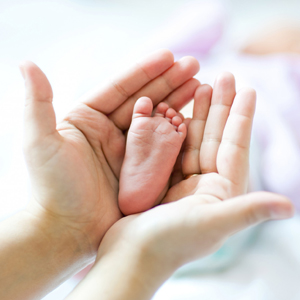Myomectomy
“Break the chains of fibroids, embrace Myo-Freedom!”
Unlocking the strength within, women face a common adversary known as fibroids, which disrupt their lives and dreams. While fibroids may unleash a load of uncomfortable symptoms and interfere with your day-to-day functioning, there is a ray of hope in the form of a Myomectomy.
Myomectomy, a transformative procedure, empowers women to reclaim control, liberating them from the clutches of fibroids. With every incision, a journey begins towards renewed vitality and freedom. It’s a chance to break free from the burdens that hold them back, restoring harmony to their bodies and spirits. Myomectomy empowers women to rewrite their stories, embracing a fibroid-free life and unlocking new possibilities for their future.
Myomectomy
Myomectomy is a surgical procedure used for removing uterine fibroids. Uterine fibroids, or leiomyomas, are small non-cancerous growths that can occur in or on the uterus. These growths are made up of connective tissues and can cause a range of symptoms in women.
Not all uterine fibroids cause symptoms. During a Myomectmy procedure, surgeons carefully remove symptom-causing fibroids while preserving the uterine tissue.
Myomectomy Benefits
Myomectomy can be a saviour for women who are suffering due to uterine fibroids. Some significant benefits of a myomectomy include the following:
- Myomectomy provides significant relief from symptoms caused by fibroids, such as heavy menstrual bleeding, pelvic pain or pressure, frequent urination, and discomfort during sex.
- Myomectomy is often preferred by women over a hysterectomy as myomectomy preserves the uterus.
- If women suffer from infertility due to fibroids, myomectomy can restore fertility by removing the bothersome fibroids.
Myomectomy is a minimally invasive option that involves smaller incisions, less pain, faster recovery, and minimal scarring compared to open surgery.
What conditions can a Myomectomy treat?
Myomectomy can significantly help in reducing and treating the following issues caused by fibroids:
- Heavy Menstrual Bleeding
- Pelvic Pain and Pressure
- Urinary Symptoms
- Reproductive Issues
Myomectomy Procedure at Giggles Hospital
At Giggles Hospital known for Women Hospital in Vizag we prioritise the comfort and support of our patients throughout their Myomectomy procedure. Here’s what you can expect during a typical Myomectomy:
- Pre-Procedure Preparation: Our medical staff will guide you through the preparations before the surgery, including fasting instructions and pre-operative tests.
- Anesthesia Administration: Before the procedure, you will receive anaesthesia to ensure you are comfortably asleep and free from pain during the surgery.
- Incision and Access: The surgeon will make a carefully placed incision in the lower abdomen to access the uterus and fibroids. Our skilled medical team ensures precision and minimal scarring.
- Fibroid Removal: The surgeon will identify and remove each fibroid from the uterus, utilising advanced surgical techniques tailored to your specific needs. This process aims to alleviate your symptoms and improve your overall well-being.
- Uterine Closure: Once all fibroids have been removed, the surgeon will meticulously close the uterine incisions using sutures, promoting proper healing and minimising the risk of complications.
- Post-Procedure Recovery: You will be moved to the recovery area, where our attentive medical staff will monitor your vital signs and provide post-operative care instructions. Pain management measures will also be in place to ensure your comfort during the recovery period.
Why Choose Giggles Hospitals?
For Best Gynecologists near me, At Giggles Hospitals, we understand the challenges that fibroids can bring to a woman’s life. That’s why we offer Myomectomy using the latest techniques under the care of top medical experts.
Our dedicated team of skilled Fibroid doctor and healthcare professionals is committed to delivering compassionate care, offering personalised treatment options tailored to meet the unique needs of every patient. With state-of-the-art technology and a patient-centred approach, we strive to help our patients regain control over their lives and achieve optimal health outcomes. Contact us today to schedule a consultation and learn more about how Myomectomy can help you regain your vitality and freedom.




